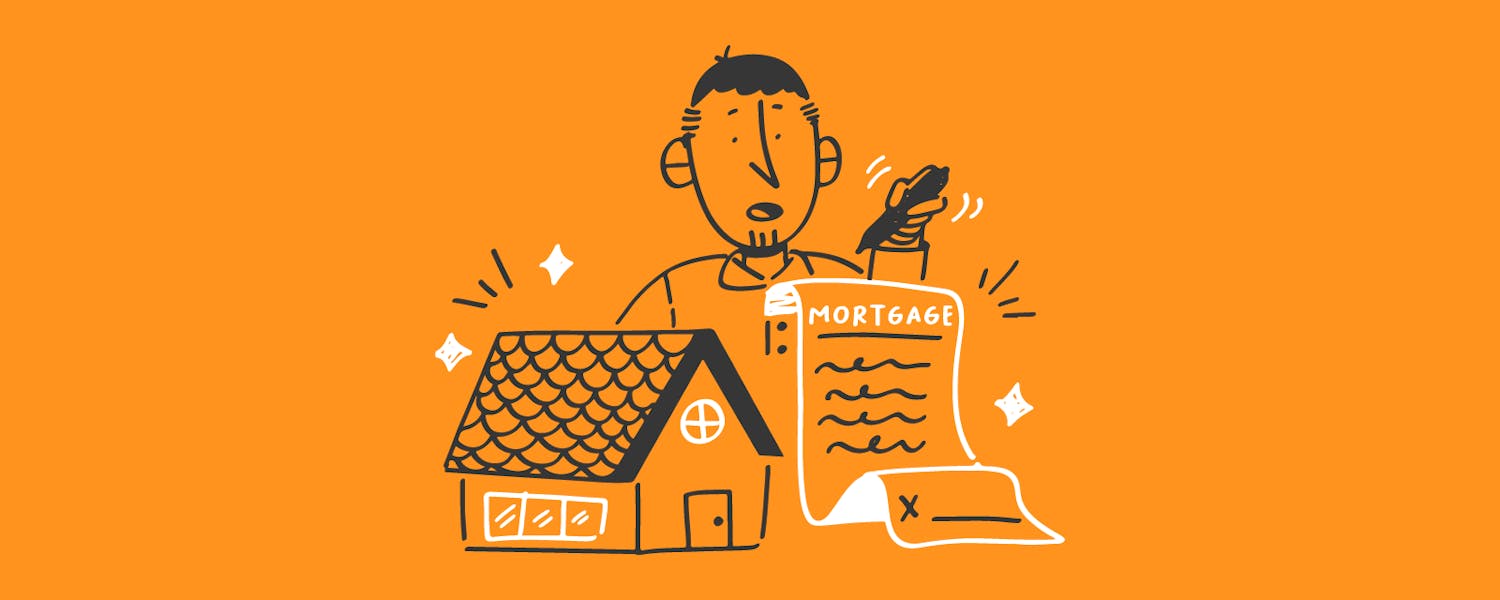Are Treasury Bills the Best First Step to Start an Investment Portfolio?
Some people compare investing to planting a garden.
- As a garden needs a variety of plants to thrive, your portfolio needs a mix of investments to weather the unpredictable ups and downs of the market.
- You need a strong foundation in both activities, though.
- Without good soil and some hardy plants, your garden is entirely at the whim of inclement weather.
Similarly, without some solid investments, your portfolio could be at risk. That's where Treasury bills, or T-bills for short, excel.
They're a popular, safe choice for many investors, and we will dive into why that is. The big wins with T-bills? They're simple and offer decent returns.
Remember this article is not intended to recommend any investment but to give awareness of how the Treasury Bills (T-Bills) work, before you invest seek guidance of a specialist who can advise you on investment decisions.
Your investment style
Envato/DragonImages
But here's the thing – investing isn't a one-size-fits-all affair. What works wonders for one person might not be the right fit for another.
T-bills might be a fantastic option for some, but they're not the universal answer to everyone's investment questions, this depends a lot on your investment profile.
So, let's look more into T-bills to see if they are an excellent first step for you. After, you'll have a crystal clear picture of whether T-bills match your financial goals. Let's get started!
What Are Treasury Bills?
Treasury bills, or T-bills for short, are like a quick investment handshake with the U.S. government.
They're short-term IOUs issued by the Federal government. Their safety net makes them stand out – they're one of the lowest-risk investments around.
Think of it this way: if the government ever found itself unable to pay up, it would send shockwaves through the financial world.
Envato/AtlasComposer
So, the government goes to great lengths to avoid any defaults.
That's why many investors turn to T-bills as their financial life raft, particularly when the economic seas get choppy.
The charm of T-bills? They're straightforward and secure. This makes them a go-to choice for those just dipping their toes into the investing pool and wanting to start on solid ground.
How do they work?
The concept of a Treasury bill is simple. Each T-bill has a maturity date, a par value, and a purchase price.
The maturity date can range from a few days up to 52 weeks.
The par value is what the U.S. government will pay on maturity.
The difference between the par value and the purchase price is what the investor will make.
For example, suppose the U.S. government issues a T-bill with a $1,000 par value in 52 weeks.
They sell that bill for $950. You would then buy the bill for $950 and get $1,000 in 52 weeks, for a percentage return of 5.26% on your money.
Envato/innu_asha84
This structure is slightly different from a Certificate of Deposit or savings account, as there's no concept of compound or even simple interest.
You make the difference between the purchase price and the par value.
A Treasury bill effectively buys future money at a discounted rate today.
The role of the Fed
T-bill rates largely correlate to the Federal funds rate as they compete for the same capital. T-bill yields must rise when the Federal Reserve raises interest rates to attract the same capital.
Conversely, if Federal Reserve rates decline, investors are willing to accept lower yields on T-bills as they cannot get as much directly from the Fed.
As we've noted, understanding the Federal Reserve's role is crucial in investing. T-bills are just another example of why that is so true!
Why Should You Consider T-bills as an Investment?
Envato/sergign
As noted above, T-bills are an incredibly low-risk investment. While the U.S. government has technically defaulted four times on debts between 1862 and 1971, the U.S. government has never refused to pay T-bill holders.
Doing so would cause immense havoc within the financial system and, thus, would be unlikely to happen.
Therefore, if you buy a bill for $950 that has a par value of $1,000, while that bill's value may fluctuate based on what the Federal Reserve does, it is about as stable of an investment as you can make - you can be nearly 100% certain that you will receive that $1,000 at the end of the bill's term.
To that end, T-bills are excellent ways to reduce stress and improve your investment portfolio.
Knowing your investment profile, including your risk tolerance and risk aversion, can help you decide if T-bills, which are arguably the safest investments you can make, are suitable for you.
Typically, you'd have a risk allocation or a certain percentage of your portfolio for more risky investments, like equities.
T-bills could then be part of your safe set of investments.
Envato/Olivier_Le_Moal
Of course, your whole portfolio doesn't need to consist solely of T-bills.
Once you know your investment profile and your risk tolerance, they can be a great way to diversify your investment portfolio.
Can T-bills Help Fight Inflation?
Inflation. That's the nine-letter word on everyone's minds these days. When building an investment portfolio, many ask, "Can this investment hedge against and fight inflation?"
The short answer is that, yes, T-bills are an inflation hedge.
Inflation is the increase in the cost of products and services over time. There's good inflation and bad inflation. Good inflation, typically 2-3% per year, gradually grows the economy by making goods and services slightly more expensive over time.
It's a subtle nudge to buy something now because it will be more expensive later, but it's also predictable and reliable.
Bad inflation is either too high or too low (potentially becoming deflation).
Envato/formatoriginal
Elevated inflation introduces significant instability into the financial system. Deflation destroys consumer demand - after all, why buy something now if it will be cheaper in the future?
The Federal Reserve will raise the Federal funds rate when inflation becomes elevated. That, in turn, means that the T-bill price must come down (so that the difference between the par value and the purchase price - the ROI - is more significant).
When you purchase a T-bill, you're getting a price that reflects not just what the Federal Reserve is doing now but what the market believes the Federal Reserve will do in the future.
If inflation is higher, T-bill prices will account for the expected increase in interest rates, giving you a more substantial gap between the par value and the purchase price.
This property of T-bills makes it a unique hedge against inflation. Since the security price reflects current value and expected rate increases or decreases until maturity, it effectively has inflation priced into it. Higher inflation, higher return; lower inflation, lower return!
Consider Your Investment Horizon
Often, you'll find yourself looking for an economical place to park your money for a few months or even a year.
T-bills have that short-term horizon, but since they don't have multi-year options, they are not an investment to buy and hold for decades.
There are U.S. savings bonds that have longer maturity dates (up to 30 years), but those are slightly different financial products.
Bills sold directly from the U.S. government have six possible timelines:
- Four weeks
- Eight weeks
- 13 weeks
- 17 weeks
- 26 weeks
- 52 weeks
However, if you buy and sell T-bills on secondary markets, you can buy T-bills with a particular maturity date.
For example, you might be able to buy a 52-week bill that matures in a week because the other person has held onto that bill already for 51 weeks.
Given the flexibility, investors often use T-bills as short-term places to park cash.
For example, suppose you want a moderately well-paying, safe investment to store the down payment money for a new home. Finding a T-bill that works in your buying timeframe could be a good option.
Or, suppose you have some cash sitting in your stock account and are looking to see how the market goes for the next couple of months before investing more money. You could put those funds in an 8-week T-bill.
In both examples above, you have a short-term financial goal and want a safe investment to help you hit it. Setting clear personal financial goals is the best way to turn your portfolio into what you want it to be.
Should You Buy Treasury Bills to Start Your Investment Fund?
Every single personal financial situation is different; there is no universal recommendation that any site can give.
Instead, you would need to consider your investment goals and see if the properties of Treasury bills make it a good investment choice for your needs.
They are an excellent beginner investment because there's no intricate knowledge required, nor is there much risk.
You can buy a T-bill and receive a reasonably solid rate of return without much effort.
Big investors often keep these in their portfolios for the same reasons: they are low-risk, and these investors want diversification.
Are Treasuries for you? Only you can decide that. But there are significantly worse financial decisions.
Treasury bills offer a decent upside with a minuscule amount of risk.





